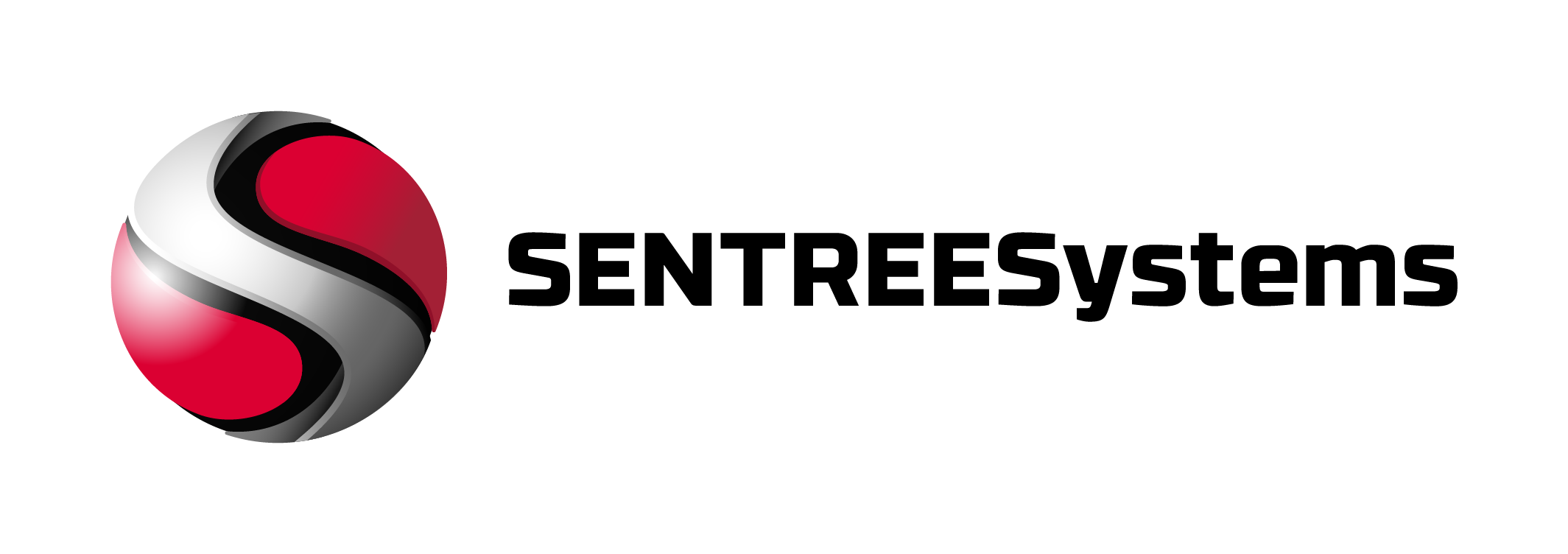Your company’s sensitive data is under constant attack. Right now, cybercriminals are scanning networks, looking for unprotected information they can steal and sell. Without proper protection, your customer records, financial data, and business secrets remain vulnerable to theft. Data encryption methods explained properly can be the difference between a secure business and a costly breach. I’ve watched too many companies learn this lesson the hard way. Smart businesses encrypt their data before they need it, not after they’ve been compromised.
Key Takeaways
- Symmetric encryption uses one key for both encryption and decryption, making it fast but requiring secure key sharing
- Asymmetric encryption uses two keys (public and private), solving the key distribution problem but operating slower than symmetric methods
- AES-256 is the current gold standard for symmetric encryption, trusted by governments and businesses worldwide
- Combining multiple encryption methods creates stronger protection than relying on any single approach
- Implementation matters more than theory—poorly configured strong encryption can be worse than properly implemented weaker methods
Data Encryption Methods Explained: The Foundation
Data encryption transforms readable information into scrambled code that only authorized parties can decode. Think of it as a digital safe that requires the right combination to open. Without the proper key, your encrypted data appears as meaningless gibberish to attackers.
I’ve implemented encryption systems for companies ranging from small medical practices to Fortune 500 corporations. The principles remain the same regardless of size. Encryption works by using mathematical algorithms to scramble data according to a specific key or set of keys.
Two fundamental approaches dominate the encryption landscape: symmetric and asymmetric encryption. Each serves different purposes and offers distinct advantages. Understanding both helps you choose the right protection for your specific needs.
Why Encryption Matters Now More Than Ever
Data breaches cost companies an average of $4.45 million according to IBM’s latest research. That figure includes direct costs like forensic investigations, legal fees, and regulatory fines. It doesn’t account for lost customers, damaged reputation, or competitive disadvantage from stolen intellectual property.
Encryption acts as your last line of defense. Even if attackers penetrate your network and steal files, properly encrypted data remains useless to them. Encrypted data that gets stolen is just expensive digital garbage to criminals who can’t decode it.
Symmetric Encryption: Speed and Simplicity
Symmetric encryption uses a single key for both encrypting and decrypting data. Both the sender and receiver must possess the same key to communicate securely. This approach delivers excellent performance and strong security when implemented correctly.
How Symmetric Encryption Works
The process follows a straightforward pattern:
- Generate a secret key
- Use the key to encrypt your plaintext data
- Transmit the encrypted data
- Use the same key to decrypt the data back to its original form
The challenge lies in key distribution. Both parties need access to the same key, but sharing keys securely over insecure channels creates a chicken-and-egg problem. How do you securely share the key needed for secure communication?
Advanced Encryption Standard (AES)
AES represents the current gold standard for symmetric encryption. The U.S. government selected AES in 2001 after a rigorous evaluation process. It replaced the older Data Encryption Standard (DES), which had become vulnerable to modern computing power.
AES comes in three key lengths:
- AES-128: Uses 128-bit keys, suitable for most commercial applications
- AES-192: Uses 192-bit keys, providing additional security margin
- AES-256: Uses 256-bit keys, required for top-secret government data
I recommend AES-256 for business use. The performance difference between AES-128 and AES-256 is negligible on modern hardware, but the security improvement is substantial. AES-256 would take longer than the age of the universe to crack using current technology.
Other Symmetric Algorithms
Several other symmetric algorithms deserve mention:
ChaCha20 offers excellent performance on mobile devices and systems without dedicated encryption hardware. Google and Cloudflare use ChaCha20 extensively in their systems.
Blowfish and Twofish provide alternatives to AES, though they see less widespread adoption. Both offer strong security but lack the extensive vetting that AES has received.
Three Data Encryption Standard (3DES) still appears in legacy systems but should be avoided for new implementations. Its 64-bit block size creates vulnerabilities in high-volume applications.
Asymmetric Encryption: Solving the Key Problem
Asymmetric encryption eliminates the key distribution problem by using two mathematically related keys. One key encrypts data, and only the other key can decrypt it. This breakthrough enabled secure communication between parties who had never met or shared secrets beforehand.
Public Key Infrastructure Basics
Each party generates a key pair consisting of a public key and a private key. You can freely share your public key with anyone, but you must keep your private key absolutely secret.
The system works in two primary modes:
Encryption: Someone encrypts a message using your public key. Only you can decrypt it using your private key. This ensures confidentiality.
Digital Signatures: You encrypt a message using your private key. Anyone can decrypt it using your public key, proving you sent it. This ensures authenticity and non-repudiation.
RSA Encryption
RSA (Rivest-Shamir-Adleman) dominates asymmetric encryption usage. Named after its inventors, RSA relies on the mathematical difficulty of factoring large prime numbers. Breaking RSA encryption requires factoring numbers with hundreds or thousands of digits.
RSA key lengths determine security strength:
- 1024-bit RSA: Deprecated and vulnerable to determined attackers
- 2048-bit RSA: Current minimum standard for most applications
- 3072-bit RSA: Recommended for long-term security
- 4096-bit RSA: Maximum security, but with significant performance impact
I’ve seen companies still using 1024-bit RSA certificates from years ago. This creates a false sense of security because the encryption appears to be working normally while providing minimal actual protection.
Elliptic Curve Cryptography (ECC)
ECC provides equivalent security to RSA using much smaller key sizes. A 256-bit ECC key offers similar protection to a 3072-bit RSA key. This efficiency makes ECC ideal for mobile devices, IoT sensors, and other resource-constrained environments.
Popular ECC curves include:
- P-256: NIST standard curve, widely supported
- P-384: Higher security NIST curve
- Curve25519: Alternative curve with performance advantages
The National Institute of Standards and Technology (NIST) provides detailed guidance on approved cryptographic algorithms and key lengths for government and commercial use.
Hybrid Encryption: Best of Both Worlds
Real-world systems combine symmetric and asymmetric encryption to maximize both security and performance. Hybrid encryption uses asymmetric methods to securely exchange symmetric keys, then uses symmetric encryption for the actual data transfer.
This approach solves multiple problems simultaneously:
Asymmetric encryption handles the key distribution challenge but operates too slowly for large amounts of data. Symmetric encryption processes data quickly but struggles with secure key sharing. Combining both methods eliminates the weaknesses of each approach.
How Hybrid Systems Work
A typical hybrid encryption process follows these steps:
- Generate a random symmetric key for this session
- Encrypt your data using the symmetric key
- Encrypt the symmetric key using the recipient’s public key
- Send both the encrypted data and encrypted key
- Recipient decrypts the symmetric key using their private key
- Recipient decrypts the data using the recovered symmetric key
Every time you visit an HTTPS website, you’re using hybrid encryption. Your browser and the web server negotiate a symmetric key using asymmetric methods, then encrypt all subsequent communication using that symmetric key.
Common Hybrid Implementations
Transport Layer Security (TLS) protects web traffic, email, and many other internet communications. TLS uses hybrid encryption with multiple algorithm choices for both the asymmetric key exchange and symmetric data encryption.
Pretty Good Privacy (PGP) and its open-source implementation GNU Privacy Guard (GPG) use hybrid encryption for email and file protection. PGP became the standard for email encryption among security-conscious users.
Virtual Private Networks (VPNs) typically use hybrid approaches, establishing secure tunnels with asymmetric key exchange, then encrypting traffic with symmetric algorithms.
Encryption Implementation Considerations
Choosing the right encryption algorithm is only the first step. Implementation details determine whether your encryption provides real security or just creates a false sense of protection.
Key Management
Key management often becomes the weakest link in encryption systems. I’ve audited companies with excellent encryption algorithms but terrible key storage practices. Strong encryption with weak key management is like installing a titanium door on a cardboard building.
Essential key management practices include:
- Generate keys using cryptographically secure random number generators
- Store keys separately from encrypted data
- Implement key rotation policies for long-term security
- Use hardware security modules (HSMs) for high-value keys
- Plan for key recovery and backup procedures
Performance Considerations
Encryption always involves performance tradeoffs. Modern hardware includes dedicated encryption instructions that dramatically improve AES performance, but older systems may struggle with encryption overhead.
Consider these performance factors:
| Encryption Type | Speed | CPU Usage | Best Use Case |
|---|---|---|---|
| AES-128 | Very Fast | Low | High-volume data |
| AES-256 | Fast | Low-Medium | General purpose |
| RSA-2048 | Slow | High | Key exchange only |
| ECC-256 | Medium | Medium | Mobile/IoT devices |
Common Implementation Mistakes
Several implementation mistakes can completely undermine strong encryption:
Using weak initialization vectors (IVs): Many encryption modes require random starting values. Reusing IVs or using predictable patterns can expose plaintext data even with correct keys.
Inadequate random number generation: Encryption depends on unpredictable random numbers. Weak random number generators create predictable keys that attackers can guess.
Side-channel vulnerabilities: Encryption implementations can leak information through timing, power consumption, or electromagnetic emissions. Constant-time algorithms help prevent these attacks.
Downgrade attacks: Systems that support multiple encryption options may be tricked into using weaker algorithms. Always configure systems to refuse weak encryption methods.
Choosing the Right Encryption Method
Selecting appropriate encryption depends on your specific requirements, threat model, and technical constraints. No single encryption method works best for every situation.
Data at Rest vs. Data in Transit
Data requires different protection strategies depending on its location and use:
Data at Rest: Information stored on disks, databases, or backup systems. Symmetric encryption like AES-256 typically provides the best combination of security and performance for stored data.
Data in Transit: Information moving across networks or between systems. Hybrid encryption protocols like TLS protect data during transmission while enabling communication between previously unknown parties.
Compliance Requirements
Many industries have specific encryption requirements:
Healthcare (HIPAA): Requires appropriate encryption for protected health information but doesn’t specify algorithms. AES-256 exceeds HIPAA requirements.
Financial Services (PCI DSS): Mandates strong encryption for credit card data. Current PCI standards require minimum AES-128 or equivalent protection.
Government (FIPS 140-2): Specifies approved algorithms and implementation requirements for federal systems. Limits choices to thoroughly vetted encryption methods.
The Cybersecurity and Infrastructure Security Agency (CISA) publishes current best practices for encryption and other cybersecurity measures across various industries.
Risk Assessment Framework
Evaluate your encryption needs using this framework:
- Identify sensitive data: What information needs protection?
- Assess threats: Who might want to steal your data?
- Evaluate impact: What happens if encryption fails?
- Consider resources: What can you realistically implement and maintain?
- Plan for evolution: How will your needs change over time?
Conclusion
Understanding common data encryption methods explained in practical terms enables you to make informed security decisions for your organization. Symmetric encryption provides speed and efficiency for protecting stored data, while asymmetric encryption solves the key distribution problem for communications. Hybrid approaches combine the strengths of both methods to create robust protection systems.
The best encryption method is the one you implement correctly and maintain properly. Perfect theoretical security means nothing if keys are poorly managed or algorithms are incorrectly configured. Start with proven methods like AES-256 for symmetric needs and RSA-2048 or ECC-256 for asymmetric requirements.
Don’t wait for a breach to force your hand. Implement appropriate encryption now, before you need it. Review your current data protection measures and identify gaps where encryption could strengthen your security posture. Your future self will thank you for taking action today.
FAQ
What is the difference between 128-bit and 256-bit encryption?
The numbers refer to key length in bits. AES-256 uses longer keys than AES-128, providing exponentially more possible key combinations. While AES-128 remains secure for most purposes, AES-256 offers a larger security margin with minimal performance impact on modern hardware. I recommend AES-256 for business use unless you have specific performance constraints.
Can quantum computers break current encryption methods?
Quantum computers pose a theoretical threat to current asymmetric encryption methods like RSA and ECC, but not to symmetric algorithms like AES. Large-scale quantum computers capable of breaking RSA-2048 don’t currently exist and may be years or decades away. However, organizations with long-term security needs should monitor post-quantum cryptography developments and plan for eventual transitions.
How often should encryption keys be changed?
Key rotation frequency depends on the sensitivity of your data, compliance requirements, and practical constraints. High-security applications may rotate keys monthly or quarterly, while less sensitive data might use annual rotation. The key principle is balancing security benefits against operational complexity. Automated key management systems make frequent rotation more practical than manual processes.
Which data encryption methods explained here work best for small businesses?
Small businesses should focus on AES-256 for file and database encryption, combined with TLS 1.3 for network communications. These methods provide excellent security with broad software support and reasonable implementation complexity. Avoid custom encryption solutions or obscure algorithms. Stick with well-established methods that have extensive real-world testing and support resources.



